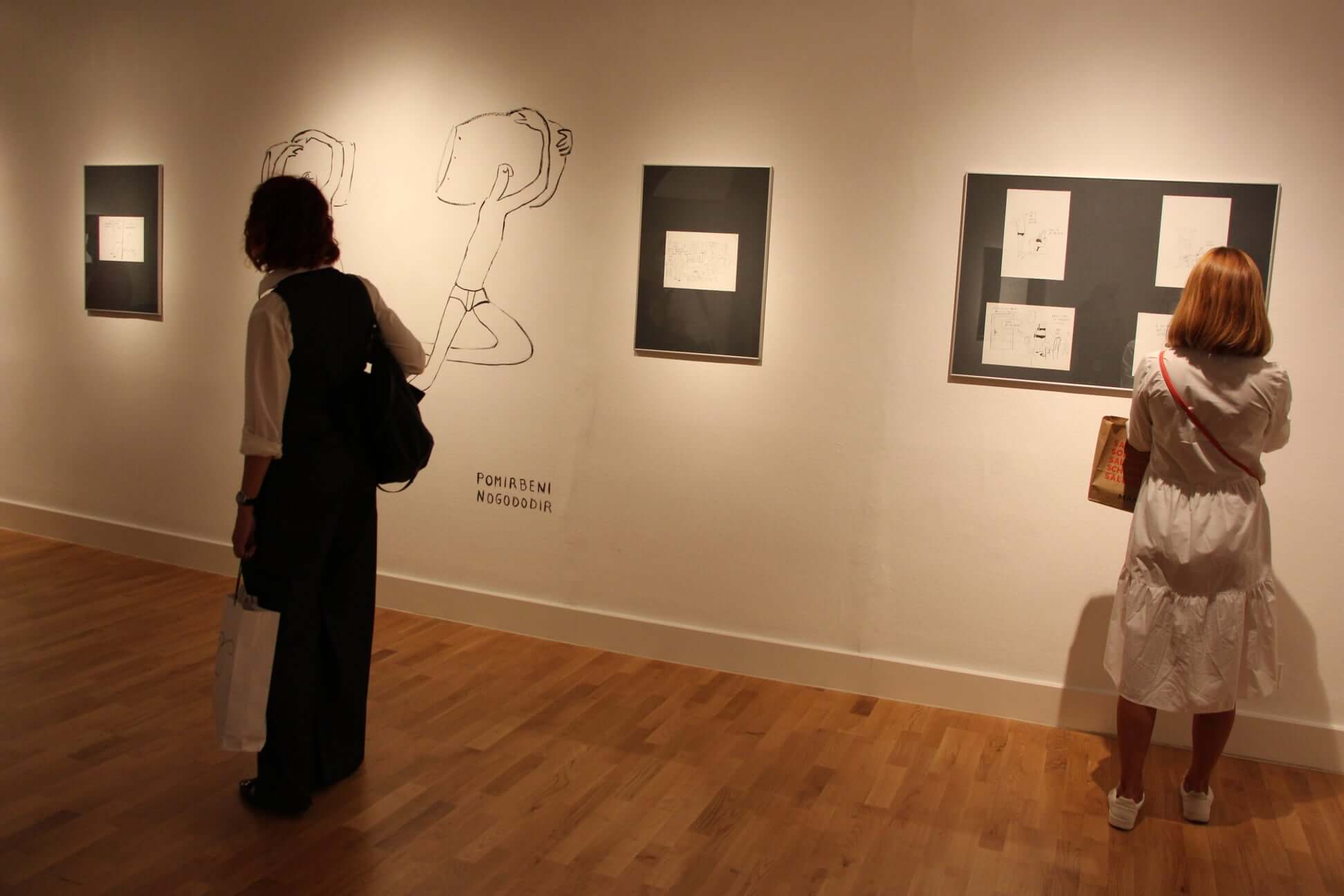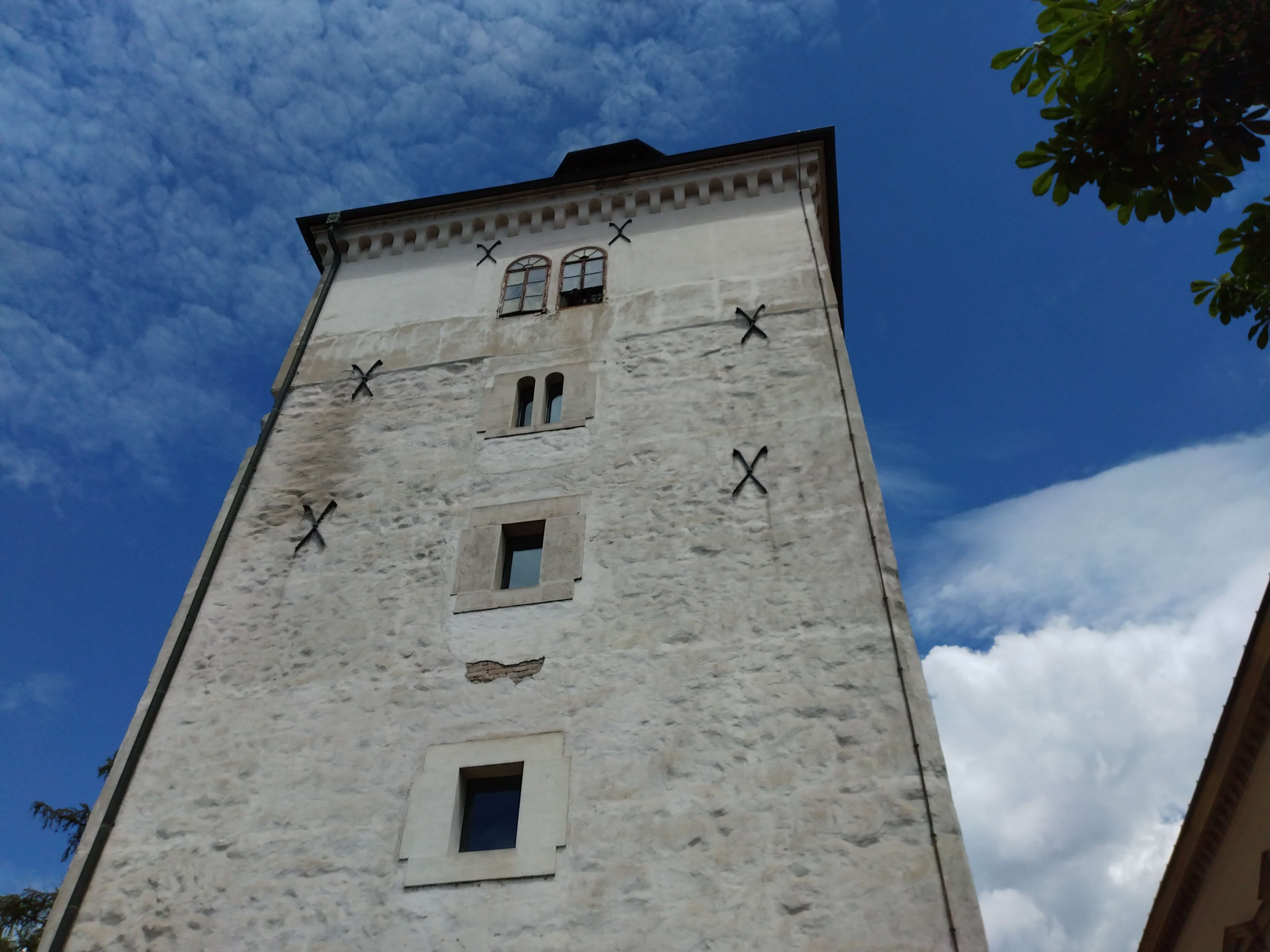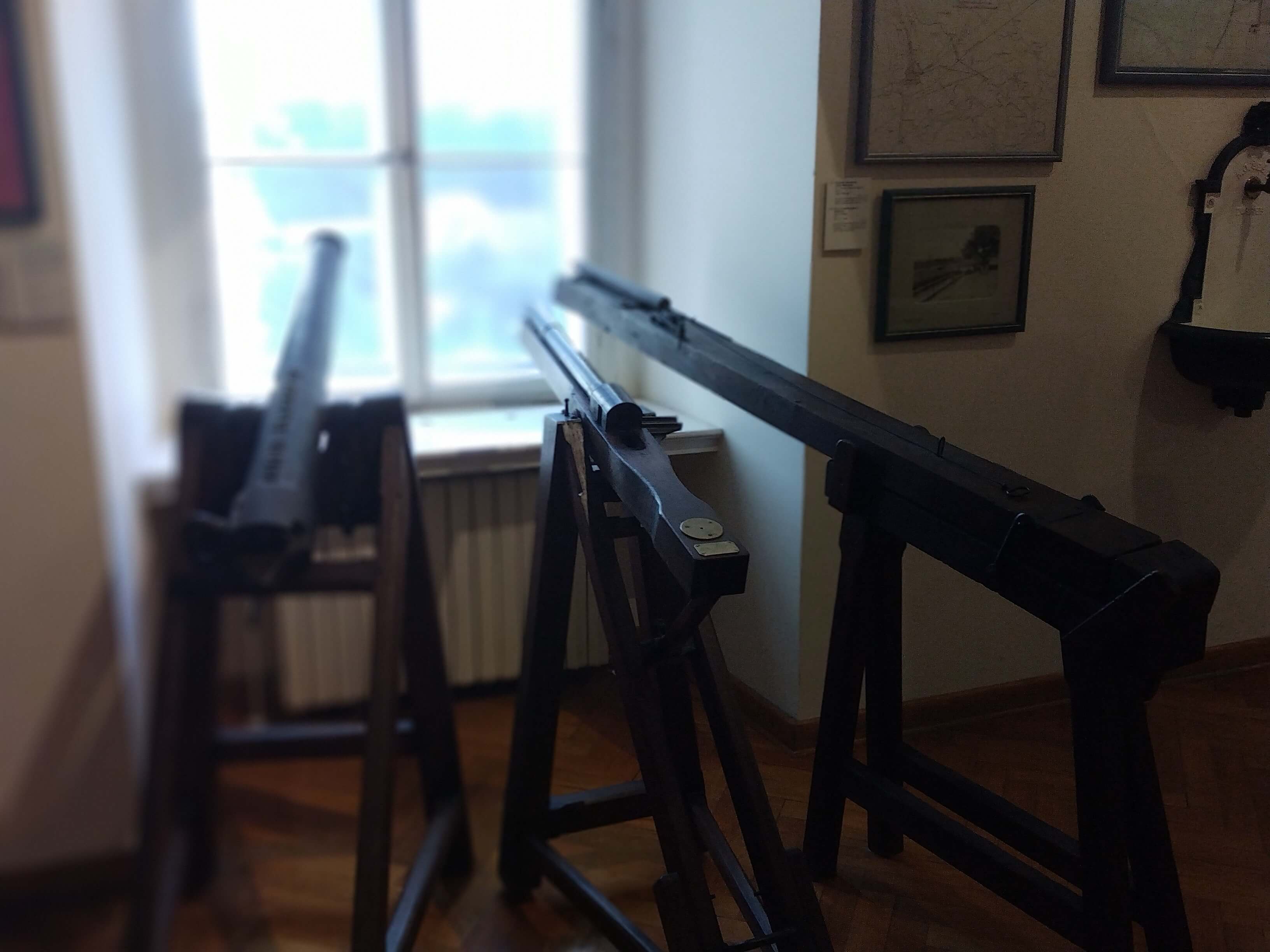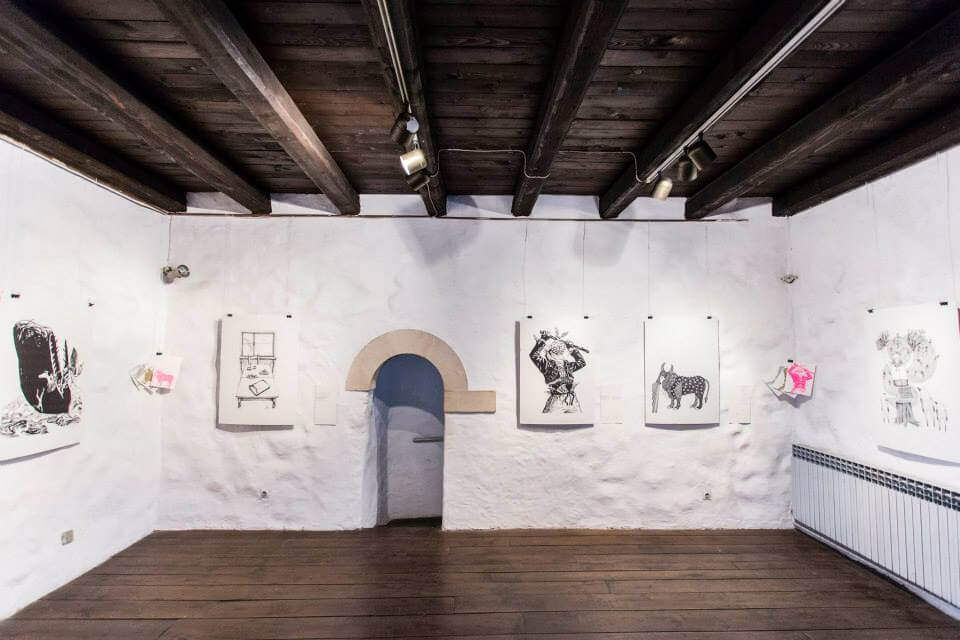Klovićevi Dvori Gallery Marks 40th Anniversary With "Ukrainian Rhapsody" Exhibition
ZAGREB, 19 May 2022 - Zagreb's Klovićevi Dvori Gallery on Wednesday marked its 40th anniversary with an exhibition of graphics entitled "Ukrainian Rhapsody" and the screening of a film about the gallery.
The exhibition, initiated by former culture minister Božo Biškupić, was opened by Culture and Media Minister Nina Obuljen Koržinek, who said that Klovićevi Dvori was one of the most important world galleries, having hosted more than 1,500 exhibitions.
The exhibition, featuring works by 14 Croatian artists, is a token of solidarity with the suffering of the Ukrainian people, Obuljen Koržinek said.
Ukrainian Ambassador Vasyl Kyrylych, who attended the event, thanked Croatia and its prime minister for their strong support to Ukraine.
Attending the opening of the exhibition were also Prime Minister Andrej Plenković, government ministers, members of parliament and other prominent public figures.
The exhibition "Ukrainian Rhapsody" lasts until 19 June.
For more, check out our lifestyle section.
Tisja Kljaković Braić Exhibition: Monument to a Living Person in Zagreb
September 28, 2021 - The Tisja Kljaković Braić exhibition titled "Monument to a Living Person" is honouring two decades of Braić's humorous, open and simple art. Authored by Frano Dulibić, the exhibition will be displayed at the Klovićevi Dvori Gallery until October 12.
The beautiful seventeenth-century building of Klovićevi Dvori in Zagreb's Upper Town (Gornji grad) is a piece of art itself. However, as this seventeenth century Jesuit monastery became one of the most known and respected art galleries in the whole country, you can expect plenty of art inside too.
If you have doubts (or you trust the statement completely and you want to enjoy some visual eye-candy), hop over to the venue at Jezuitski Trg 4 (Jesuit Square 4), for the monographic exhibition ''Monument to a Living Person'' that will be on until October 12.
The author of the exhibition is the art historian Dr. Frano Dulibić who gathered and displayed the work of the iconic Croatian painter Tisja Kraković Braić.
"Tisja Kljaković Braić has been part of the art scene for the last twenty years. After twenty years of dedicated work, there are many reasons to present the artist through a compilation of her best and most characteristic artwork. The exhibition at the Klovićevi Dvori Gallery will present her work from its initial phase of art brut painting, as well as her lyric, poetic paintings, sculptures, and drawings,'' Bulić said when explaining the motive of his display, as is written on Klovićevi Dvori's official website.
TCN readers may recall an interview with Kljaković Braić back in 2020 as she authored a book of caricatures on Dalmatian life entitled ''ONI'' (They).

Scene from the "Monument to a Living Person" © Galerija Klovićevi dvori
''ONI'' are not left out in this exhibition either, and twenty years of Braić's work has made her art noted for its simple lines and shapes that gaze at you with openness, brazenness, honesty, and humor. It has been rated as primitive but certainly not in a bad way, quite on the contrary, due to effective ''waking up'' seen as a response from onlookers.
''With her primitivism, Tisja builds on many artistic paragons, from Paul Klee to Alberto Giacometti and Jean Dubuffet, who left significant marks on the art world. Nowadays, due to negative cultural implications, the art world seeks to avoid the term ''primitivism'' and appropriately replace it. At this point, the inevitable question arises: what is it in primitivist art forms that lures contemporary artists towards it, in a time of so many different art movements and ‘…isms’ passing us by?
The answer lies in an aspiration for disassociation from the frantic chase after something new and yet unseen, and an association with what is original, archetypal, primordial, and uncorrupted, that is, with the age when everything began,'' concludes Dulibić. Valentina Bach is the curator of this exhibition which is located on the first floor of Klovićevi Dvori. The gallery is open from Tuesday to Sunday, from 11:00 – 19:00.
Learn more about Croatian Art Galleries in Zagreb, Dalmatia, Istria & Slavonia on our TC page.
For more about art in Croatia, follow TCN's dedicated page.
Zagreb Grič Cannon: Explosive Noon Reminder
July 9, 2021 - Zagreb Grič Cannon - a reminder of noon, and a reason to avoid the centre if you aren't a fan of loud sounds. Get your noise-canceling headphones and read about the cannon's history, courtesy of TCN reporter Ivor Kruljac.
If you find yourself walking around a wider Zagreb centre (such as Savska Cesta or Marin Držić Avenue) around noon, and you focus on the sounds of the city, you may notice a weird sound in between traffic and people passing. An unusual sound, as if someone dropped a heavy box. But, if around noon, you find yourself at Ban Jelačić square or upper town, you will hear a clear and loud BANG! Fear not, as this is not a terrorist attack, and you weren't lied to when your tourist agency swore to god Zagreb is safe from such horrors. The heart-stopping bang is a signifier of noon. If you hear a boom at 11:59 or 12:01, your watch is behind a minute. The cannon states that clear and very, very loud.
Loudest time checker you could think of
Grič cannon first started signaling noon on January 1, 1877, and was located at the State's Meteorology department, back in times when Croatia was part of the Austrian-Hungarian Monarchy. It wasn't until 1927 that it was moved to Fort Lotršćak where it is situated today.
According to the Klovićevi Dvori Gallery's official website, Fort Lotrščak was named after a bell and comes from campana latrunculorum, which is Latin for „Bell of Thieves“ that rang before closing city gates. Historians aren't exactly sure what the Fort looked like in medieval times, although it is speculated based on old sketches that it had only two floors. It wasn't until 1857 that romanticistic architecture gave the fortress today's four floors and an additional tower at the very top (from which you have a breath-taking view of Zagreb today).

Fort Lotrščak © Ivor Kruljac / Total Croatia News
In the 17th century, the Fort served as trading storage and had various other ways to adapt to the need of Zagreb and Zagreb's citizens at different times. At one point, when the City was out of money to restore and repair the Fort, it gave Lotrščak to citizens for rent. Citizens who wanted the Fort also had the obligation of maintaining it, and in case of enemy assault, it was to be returned back to the City for defense purposes.
Warning shot
Speaking of defense purposes, an old legend says how this cannon managed to save Zagreb with a single shot from the Ottoman conquerors. Legend has it that the Ottoman commander Hasan Pasha (Hasan Paša) settled his army at the coast of the Sava river, in today's area of Novi Zagreb. He was preparing to cross the river and invade the city. But before that, he was about to have lunch one day, and Zagreb fired from the cannon in the Ottoman's direction, close to Hasan and blasting a chicken he wanted to eat. The shot scared the hell out of the Ottomans and they retreated, leaving Zagreb intact.
Changing arsenal
Over the course of time, there were five different Grič cannons that served the purpose of signaling noon. The current canon was given during Zagreb's Univerzijada in 1987, courtesy of the Yugoslavian National Army (JNA) as Croatia at the time was part of the Socialist Federal Republic of Yugoslavia (SFRJ).
As for the first three, you can find them today in the collection of the Zagreb City Museum. The first cannon originated in 1876 and was replaced by the second cannon in the unidentified year at the end of the 19th century. The third cannon you can see in Zagreb City Museum, and the first that was situated on Lotrščak fort, was introduced in 1928, and it was made by restoring a Polish cannon from 1912.

Three cannons showcased at Zagreb City Museum © Ivor Kruljac / Total Croatia News
So finding yourself in front of Fort Lotrščak (whose entrance is located right next to the Upper town funicular station) is not recognizable if you are not a fan of loud noise as it can give you a sound fright even down below at Jelačić square and the surrounding area. But, for the brave ones, the Grič cannon can provide a unique souvenir from Zagreb. It doesn't use live ammo (the cannon is modified so it can't), but it does fire several pieces of thick cardboard that then flies down to the area underneath Lotrščak's entrance and smelling like gunpowder.
Ceased fire
Despite being a regular background sound for the experience of living in Zagreb, Grič cannon went through periods when it ceased fire and stopped making statements. The first such instance was World War I and then followed by the war in the nineties. Most recently, the cannon was silenced after the Zagreb earthquake on March 22, 2020, but it re-fired hot and heavy sometimes in May 2020. However, followed by the December 29th Petrinja earthquake, which was also felt heavy in Zagreb, the cannon is silent even today.
„We are not quite sure when it will re-fire“, briefly commented the Zagreb Tourist Board member that welcomed me in Fort Lotrščak, one of the locations where Zagreb TB has a regular stand. Still, despite the cannon being silenced, you can climb and sightsee Lotrščak, the famous cannon as well as the watchtower on top of the Fort, for the prize of 20 kunas.

One of the exhibitions at Lotrščak © Kula Lotrščak
The Lotrščak Fort address is Tomićeva 9, and the Fort occasionally also hosts various exhibitions at times too. But, the cannon is a regular feature, and there are lots of info on the history of the cannon and the Fort itself there too on the walls- both in English and Croatian.
Learn more about Zagreb on our TC page.
For more about history in Croatia, follow TCN's dedicated page.
Vasko Lipovac Restrospective Exhibition Opens in Klovićevi Dvori
More than 250 artworks by the great Croatian artist Vasko Lipovac will be displayed at the retrospective exhibition in Klovićevi Dvori, which will remain open until January 2018.


